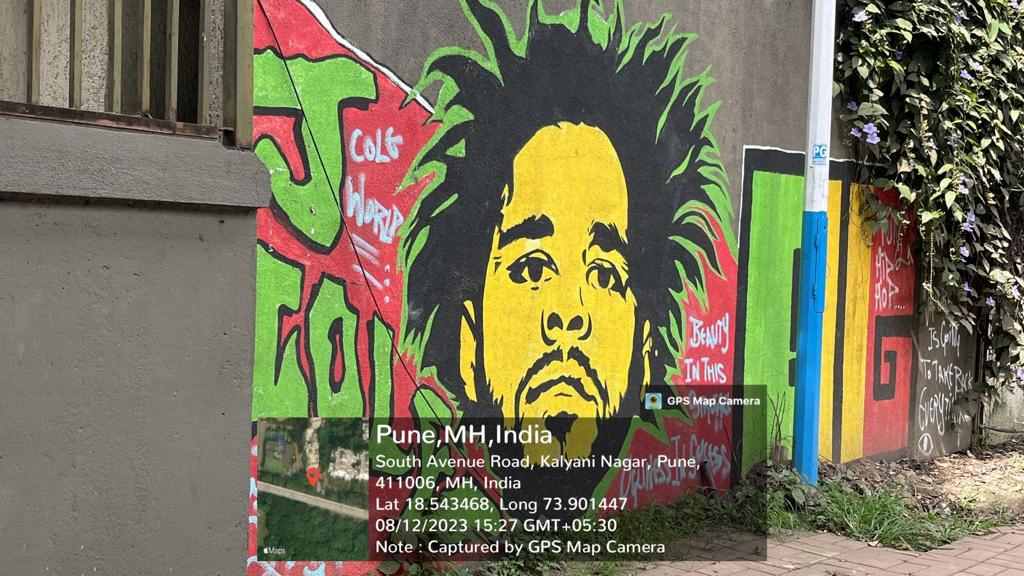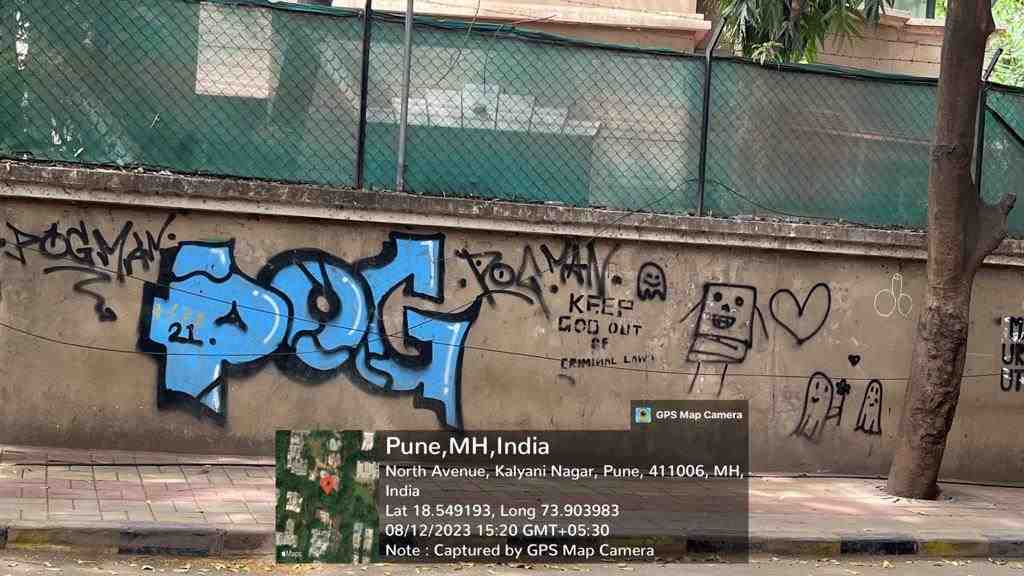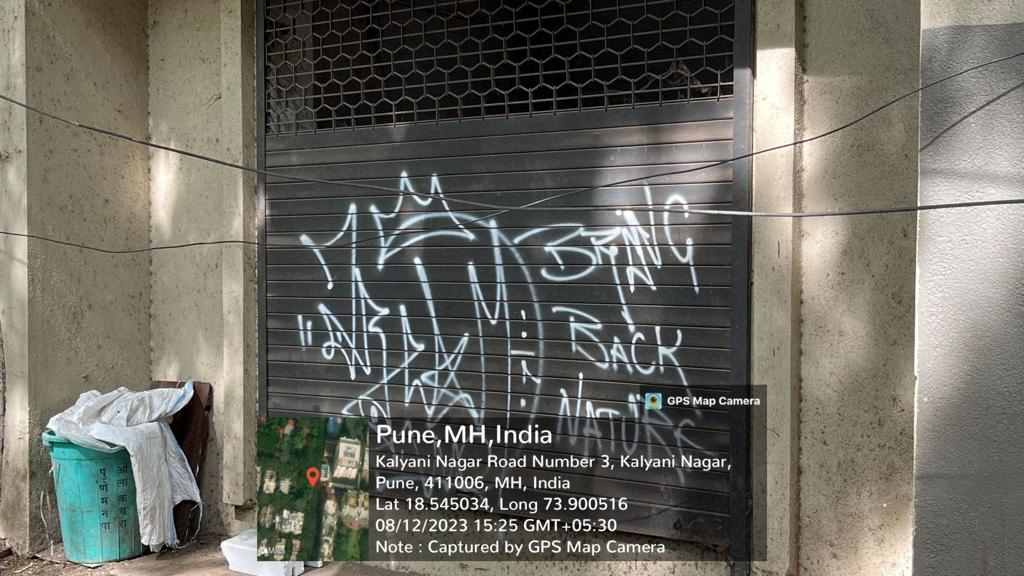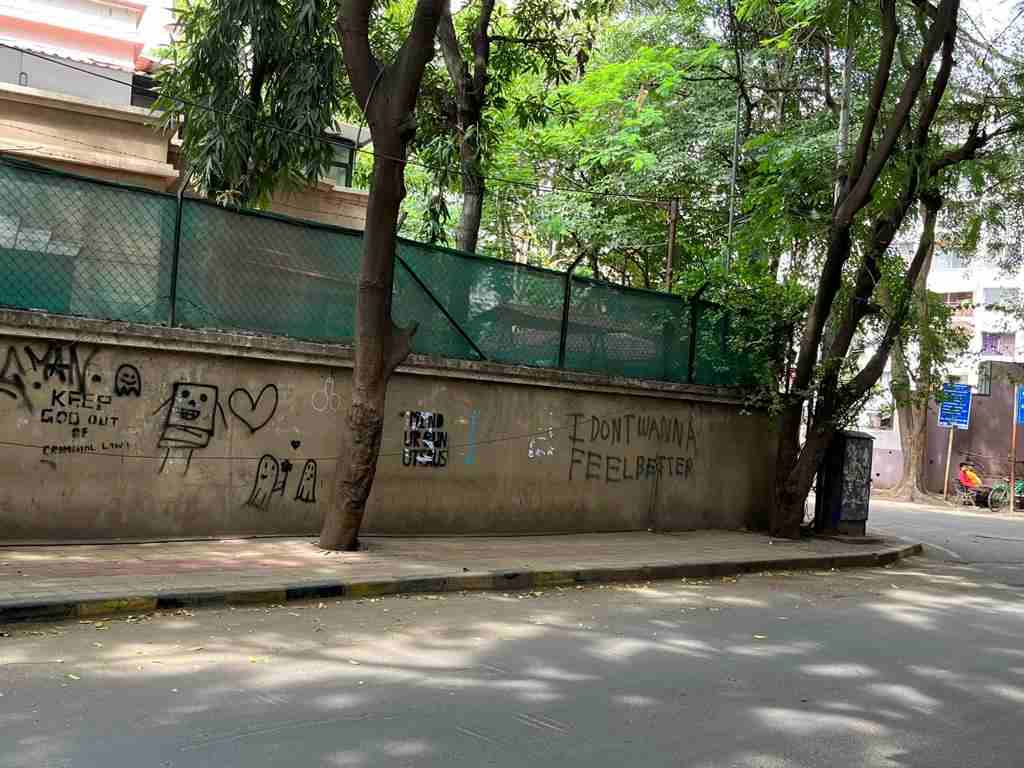Pune News : Kalyani Nagar Residents Irked Over Vandalism and Use Of Obscene Language On Society’s Outer Wall

A wave of vandalism has wreaked havoc on various outer walls within the community, leaving residents of Siddharth Estates, Waterfront and Trump Towers, etc. of Kalyani Nagar, Pune are outraged and concerned about the implications for their well-being. Mischief-makers have defaced these walls with offensive language, nonsensical quotes, and unwelcome imagery, casting a shadow over the communal space and raising serious apprehensions about the negative aftermath. This recent spree of defacement not only infringes upon public property but also jeopardizes the neighborhood’s sense of safety and unity.

Residents are grappling with distress as the offensive graffiti and images mar the aesthetic appeal of the neighborhood and potentially have psychological repercussions on those encountering them regularly. Of particular concern are parents who worry about their children’s exposure to explicit content and the damaging messages conveyed by the defacement.
The issue further extends to health hazards stemming from the use of spray paint. The volatile organic compounds (VOCs) and other harmful chemicals emitted by such paints pose risks to both human health and the environment. Extended exposure to these fumes can result in respiratory ailments, allergies, and other health complications, with vulnerable populations like children and individuals with pre-existing conditions being particularly susceptible.

- Exposure to Toxic Chemicals: Spray paints laden with volatile organic compounds (VOCs) and harmful chemicals can lead to respiratory irritation, headaches, dizziness, and nausea upon inhalation.
- Respiratory Distress: Inhaling fumes from spray paint can irritate the respiratory tract, exacerbating existing conditions like asthma and bronchitis, and potentially causing chronic respiratory issues.
- Allergic Responses: Some individuals may develop allergic reactions, such as skin rashes, itching, and redness, when in contact with the painted surfaces.
- Eye Irritation: Particles and fumes released during spray painting can cause eye irritation, redness, tearing, and discomfort, potentially leading to damage upon direct contact.
- Long-Term Health Impacts: Consistent exposure to VOCs in spray paint has been linked to lasting health effects, including damage to the central nervous system, liver, and kidneys, along with an elevated risk of certain cancers.
- Environmental Consequences: The chemicals in spray paint contribute to air and water pollution, impacting both human health and ecosystems when used for vandalism in public spaces.
- Disturbance in the Community: The presence of graffiti and defaced walls causes distress and anxiety among community members, adversely affecting mental well-being, especially when containing offensive content.
- Vulnerable Populations: Children and those with pre-existing health conditions are at heightened risk due to their developing bodies and compromised immune systems.
- Secondary Exposure: Even after the initial vandalism, the painted surface may continue emitting fumes and particles, endangering anyone interacting with the affected area.
The vandalism holds broader ramifications for the entire community. It breeds an environment of insecurity and anxiety among residents, casting a negative light on the neighborhood. Property values could plummet, impacting homeowners’ investments, and collective expenses for the removal and restoration of the vandalized walls will burden the community.

Addressing this issue requires proactive steps by the authorities:
- Investigation and Accountability: Law enforcement must thoroughly investigate and identify the culprits through surveillance footage, witness accounts, and evidence.
- Legal Repercussions: Perpetrators should face legal consequences, potentially including charges for property damage and vandalism, to deter future incidents.
- Community Participation: Local authorities should engage the community in discussions to foster unity and shared responsibility.
- Prevention Initiatives: Educational programs raising awareness about vandalism’s negative impacts can be implemented in schools and community centers.
- Enhanced Surveillance: Strengthening security systems in public spaces can deter vandals and aid in their apprehension.
- Regular Maintenance: Promptly removing graffiti discourages further acts of defacement.
- Community Involvement: Encouraging vigilance and reporting suspicious activities can prevent vandalism.
- Positive Engagement: Channeling youthful energy into creative outlets can divert them from destructive behavior.
- Restoration Collaboration: Involving local artists or residents in restoring defaced areas can demonstrate unity.
- Public Awareness: Launching campaigns can educate residents about the consequences of vandalism.
- Environmental Responsibility: Promoting eco-friendly graffiti removal methods minimizes environmental harm.










